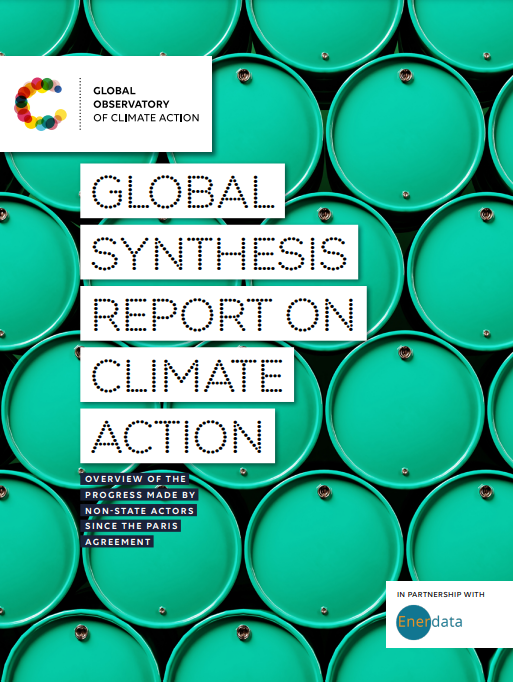
- Global CO2 emissions hit a new record in 2022, despite the drop observed in 2020 during the Covid-19 pandemic.
- Emissions have plateaued in the OECD. The EU and the UK have embarked on a sustained reductions in their territorial emissions. The trend has been more erratic in the United States since 2000. Japan reached its peak in 2013, as did Australia in 2017 and South Korea in 2018, more as a result of weak GDP growth than a real shift in the energy mix.
- Emissions are growing mainly in non-OECD countries, which now account for 60% of global emissions. More than 70% of the growth in global emissions since 2000 has taken place in China, where per capita emissions even exceed those of the EU. Despite strong growth, per capita emissions in India and Indonesia remain well below those of the industrialized countries.
- Carbon inequalities are increasingly well measured, and can now be observed both between nations and between income levels within countries. For example, the carbon footprint of China’s middle and upper classes is converging with that of industrialised countries, and increasing the gap with the lowest incomes.
Read more in the report
- Emissions from electricity generation have followed a constant upward trend since 2015, except for the fall triggered by the pandemic in 2020.
- Since 2015, renewable capacity additions have outstripped fossil capacity additions (respectively accounting for three quarters and one quarter of the capacity added between 2019 and 2022). But on average, three times as much renewable capacity is needed to replace fossil capacity.
- The average carbon intensity of electricity generation has therefore fallen overall since 2015, but the rise in global demand is outpacing the decarbonization of the mix. Where it is taking place, the transition away from coal is benefiting renewables as much as it benefits gas.
- Government subsidies are keeping coal alive in China, India and Indonesia, while oil companies are still investing far too little in renewables to begin a genuin transition away from oil.
Read more in the report
- Since the Paris Agreement, global CO2 emissions from transport have been rising, except in the OCED, where it is slightly contracting. Demand for mobility is growing in the Global South, while efforts to reduce demand are still in their early days.
- The success of electric car sales in Europe and China has not yet dented the hegemony of oil, which has been eroded by biofuels only in a handful of countries (Norway, Sweden, Brazil…).
- Carmakers, whose sales have been falling for the past five years, have resolutely embarked on their transition, but the “SUVization” of the market is wiping out efficiency gains made possible by electrification.
- The mitigation roadmaps for international air and sea transport promote alternative fuels, which remain marginal and do not address the growth in demand.
- The supply and demand for high-speed rail is expanding, particularly in China. Europe is gradually rehabilitating night trains and short-distance rail, while India has electrified its lines on a massive scale.
Read more in the report
- The global built-up area has been faster than the energy efficiency gains in buildings. As a result, emissions from the sector have been on the rise since 2015.
- Energy consumption of buildings in non-OECD countries, pushed by new constructions and demographic growth, is growing faster than in the OCED, where renovation is not at the needed level.
- In the North, despite gradual electrification, the slow decarbonization of the electricity mix is holding back the sector’s decline in emissions. In Germany and the United States, social movements are contesting the phase-out of gas in new buildings by states and municipalities.
- In light of its energy vulnerability revealed by the war in Ukraine, energy sufficiency is making a concrete entry into European policies; its impact remains to be seen over time.
- In the South, the need for air-conditioning is rapidly increasing. Isolated initiatives are seeking to scale-up, based on traditional materials and know-how.
Read more in the report
- Global CO2 emissions from industry rose slightly between 2015 and 2022, driven mainly by fuel combustion.
- Long ignored, carbon capture and storage is once again mobilizing investors – especially oil companies, who are extending the life of depleting oil wells. Installed and developing capture potential remains very low.
- Despite growing political and financial investment since the post-pandemic recovery plans, “green” hydrogen production processes and its decarbonized uses are still limited, and depend on the availability of a decarbonized electricity mix.
- The quest for industrial sovereignty over metals strategic to the transition is defining the contours of a new geopolitical map of raw materials, between indsutrialized countries China who is dominating the value chains, and emerging countries rich in natural resources (Indonesida, DEC, Bolivia…).
Read more in the report
- Since 2018, the share of circular processes (recycling, composting, etc.) in global consumption of raw materials has continued to shrink: the growth in demand for virgin raw materials has overtaken the progress made by global circularity.
- Monitoring of the evolution of global waste production suffers from a lack of aggregated data, making it hard to precisely follow its destinations: numerous waste items drop off the grid, move intro informal circuits, or disappear in landfills.
- The closure of Chinese and other Asian borders to imports of recyclable waste in 2018, followed by the amendment of the Basel Convention on hazardous waste, have slowed and redirected international waste trade towards new countries. Lnadfilling and incinerationg, emitting CH4 and CO2, have gained ground.
- In Europe, and increasingly in North America, Extended Producer Responsibility (EPR) and deposit-return schemes are demonstrating their ability to organize and finance collection and recycling channels.
Read more in the report
- Annual global tree cover loss has slowed since peaking in 2016, but remains above the 2000-2015 average. The carbon stocking capacity of forests therefore continues to weaken.
- Indonesia has significantly slowed its rate of deforestation, which is accelerating in the Democratic Republic of Congo and in Brazil.
- International targets for combating deforestation (New York Declaration), accelerating reforestation (Bonn Challenge) and promoting biodiversity (Aichi Targets) have generally not been met so far.
- Financing for biodiversity and forests is growing. “Nature-based” carbon credits are driving the development of voluntary carbon markets.
Read more in the report
- Since the Paris Agreement, “net zero emissions” has become the compass guiding corporate climate action, and a driver for their growth strategies.
- Often unclear and limited to “operational” emissions (Scopes 1 & 2), these targets overlook value chain emissions (Scope 3), which represent 75% of companies’ carbon footprints.
- Corporate transition plans, which should specify the means to reach carbon neutrality, lack precision on the required investments and changes in business models.
- Carbon offsets via voluntary markets, gaining popularity among companies, requires greater methodological credibility and transparency, at a time when “carbon neutrality” claims are beginning to be regulated in Europe.
Read more in the report
- Cities signatory to the Covenant of Mayors in Europe have, according to reported data, reduced emissions beyonds their average targets for 2005-2020, in line with EU targets.
- The mobilization of cities if growing significantly in Latin America and Sub-Saharan Africa. In Europe, adaptation planning is improving in quality.
- Around the world, the analysis of real progress by local governments is met with a lack of data that is credible and coherent over time. In Europe, the average gap between two municipal inventories equals the length of a mayor’s mandate in France – six years.
- Several cities are rendering permanent the resilience measures that were taken during the pandemic, like the roll-out of cycling infrastructure. Subnational regions play a central role in ensuring the just transition of coal-dependent areas.
Read more in the report
- Since 2015, civil society has diversified its repertoire of actions and radicalized its positions, multiplying conflicts and leading to contested major infrastructures projects being abandoned (Notre Dame des Landes, Yasuni…).
- Shareholder activism is on the increase, but shareholder-supported resolutions are less likely to win the confidence of general assembly meetings than those tabled by the company’s board.
- Use of legel proceedings to challenge a government policy or a compaby strategy has a high success rate in the courts. On a case-by-case basis, the effectiveness of the implementation of decisions has yet to be assessed.
- The increasingly frequent use of law or legislation to confer rights on nature, ecosystems or animals is gaining in popularity.
Read more in the report



